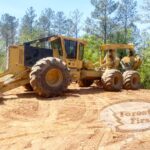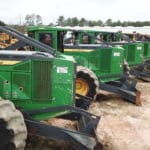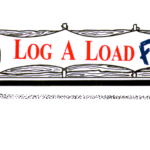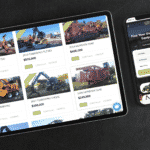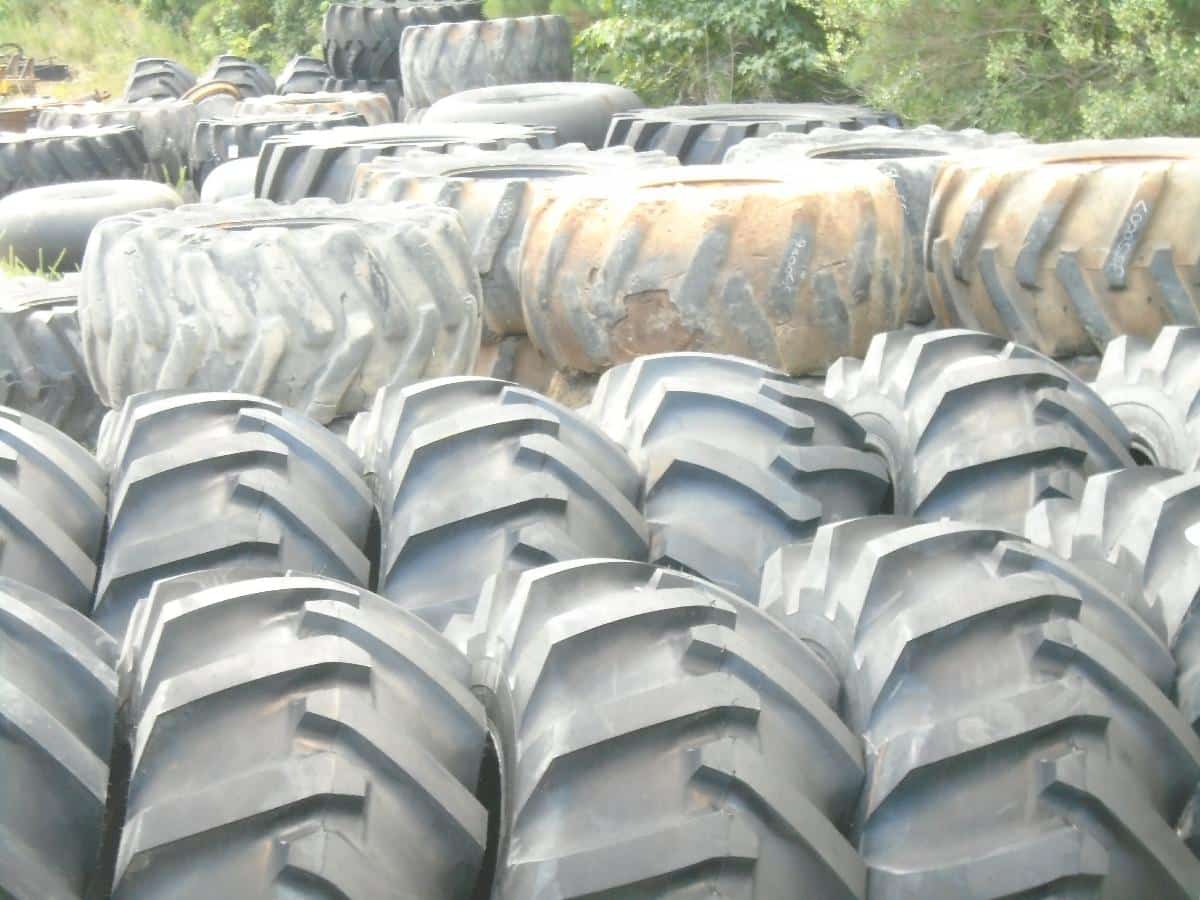
Skidder Tire’s doing it right
Historically, quality skidder tires have been made to withstand extremely tough conditions and have performed well, normally holding up long enough to wear the tire out. There was enough quality engineering in these tires to allow for some sloppy tire maintenance. Today, larger skidders, with much larger grapples, have brought all tire manufacturers to task. Southern timber is heavier, and the drags are, on average, more level than up north. These factors create the ability for skidders to pull heavier loads and result in higher torque loading on the tires. There is no longer any margin of error for lack of tire pressure monitoring or error in mounting. 30.5×32 and 35.5×32 tires are most common to have shown these issues due to their popularity on the largest machines. Increasing tire ply helps some; but proper mounting and correct air pressure are essential.
Mounting Tips:
For a tire to enjoy a long life it must not only be sized correctly to the load it will carry, but it must be able to maintain proper air pressure. This begins with a quality mounting. It is especially important with 35.5 tires since it is both 5” taller and 5” wider than the 30.5 tire. The torque on the sidewall of the 35.5 tire at the rim is much higher than the 30.5 due to the longer sidewall and wider tread. Whether you are mounting with a tube or without it’s important to mount the tire on a wheel with good, elevated knurling on BOTH sides of the wheel. This knurling on the wheel keeps the tire from slipping on the wheel in high torque situations. If the knurling is not even on both sides of the wheel it may allow for one side to slip first causing the tire sidewall to twist and distort under load, eventually causing a separation.
Even on new wheels the knurling can be inconsistent. What is important is the fact that the knurling must be raised up above the shell material allow the bead to mate to it when inflated to proper operating pressure. Oftentimes new wheels are primed and painted over the knurling effectively minimizing the mating effect. In this case it’s important to clean off excessive paint, rust, dirt, anything that will affect the knurl from contacting the bead properly. On used wheels the knurling can be dulled from a prior tire spin. This can make the knurling ineffective in holding another tire.
Before mounting the tire clean any debris on inside of wheel. This is to ensure there will be no friction between the tube and the wheel debris. If mounting tubeless replace the tubeless valve stems to ensure proper sealing. Check the wheel for any cracks or damage in and around the valve stem protector (or anywhere else).
When mounting use a tire soap that will evaporate. Murphy’s soap is a good option. Use as little soap as possible. Always try to install the tire on the wheel without turning or ‘curling’ the bead. Take care not to put excessive pressure on one area of the bead to avoid damaging the bead.
Mounting a tire with a tube can be difficult. Mounting one tubeless, depending on the tire brand, can be an additional challenge. The unmounted bead to bead distance across will determine how effectively you will be able to mount the tire tubeless. Tubeless mounting will eliminate the cost of an expensive all-natural rubber tube. Additionally, if the tire ever slips the tube valve stem will be pulled and the tube will have to be replaced again. Feel free to view a video on our Forestry First YouTube channel to see a good example of mounting a Nokian Logger King 30.5 26 ply tire.
Industry Buzz:
There is talk from tire manufacturers about returning to three- or five-piece wheels for easier mounting and less bead damage. They could also go to a larger diameter wheel to increase the bead diameter for torque transfer.
Air Pressure:
Maintaining proper air pressure is essential to tire structure. Too much air pressure can cause puncture failure and lack of traction while too little air pressure will damage the tire sidewalls under heavy loading by excessive flexing. Almost without exception on larger skidders the 30.5 and 35.5 tires must be aired between 42-44 psi.
The damage to the tire is normally seen in either internal or external separation. Internal separation oftentimes is seen as a bubble in the sidewall where air in the tire is escaping into the sidewall laminations of the tire.
Any tire slippage on the wheel will normally allow air to escape and allow the tire pressure to decrease. If this goes undetected the tire will suffer damage eventually. For this reason, it’s reasonable to mark the tire position on the wheel to be able to note any movement easily during operation. This doesn’t eliminate the need to periodically check the tire air pressure.
Industry Buzz:
Skidder manufacturers should install tire pressure monitoring capability like we have on most modern vehicles today.
Replacement tires:
When buying replacement tires for your machine it is important to match tread height as closely as possible. This will allow the best traction and reduced powertrain wear. Manufacturers recommend no more than 3% side to side diameter differential and 6% front to rear axle.
Final Thoughts:
Forestry tires have a tough life. They take a lot of abuse and keep rolling on. Through experience with customers, manufacturers, and our own equipment we have found that proper tire selection, mounting and maintaining correct air pressure will keep you rolling longer – lowering your operating costs and downtime significantly. At Forestry First we offer Primex Forestry Tires, a top quality, worldwide brand that is committed to providing the best value to you. As well, we have a large selection of used ‘take offs’ that are available on our website.
Add a comment Cancel reply
Categories
- Forestry Equipment News (2)
- Maintenance (1)
- Uncategorized (2)
Recent Posts
About us

Leaning on the experience of many who came before, we can pass down the best practices for generations to come.


